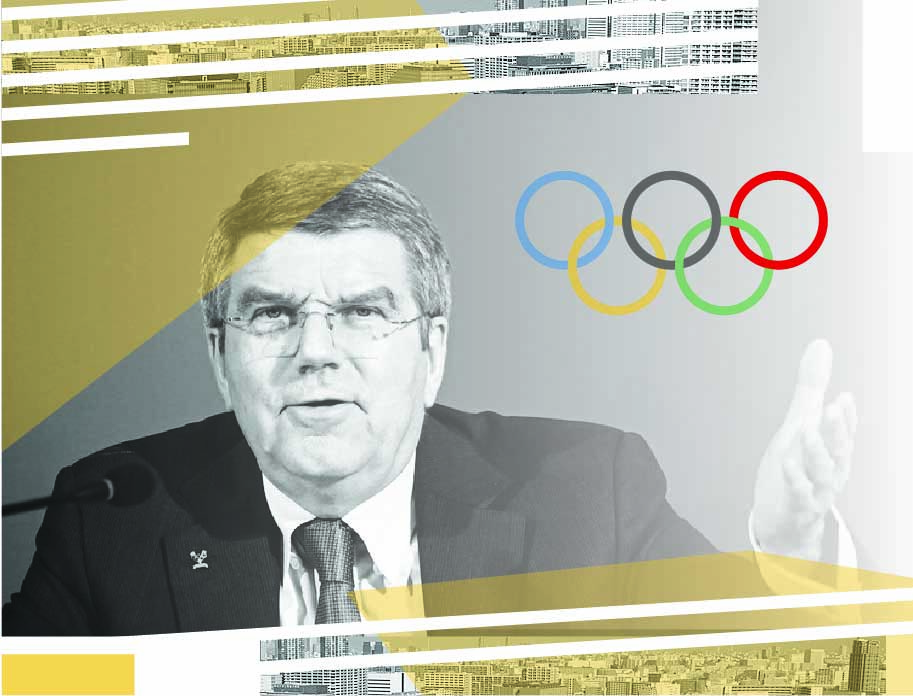
Dr Tatiane Hilgemberg
Assistant Professor in Communication and a researcher at Roraima Federal University, Brazil. She received her doctorate in Communication from State University of Rio de Janeiro and her Masters in Communication Science at Porto University. Her research interests include Critical Disability Studies and Sports, Stereotypes, Minorities and the Media.

Section 2: Media Coverage & Representation
- Twitter conversations on Indian female athletes in Tokyo
- ”Unity in Diversity” – The varying media representations of female Olympic athletes
- The Olympic Channel: insights on its distinctive role in Tokyo 2020
- How do we truly interpret the Tokyo Olympic ratings?
- Between sexualization and de-sexualization: the representation of female athletes in Tokyo 2020
- Reshaping the Olympics media coverage through innovation
- An Olympic utopia: separating politics and sport. Primary notes after analyzing the opening ceremony media coverage of mainstream Spanish sport newspapers
- What place is this? Tokyo’s made-for-television Olympics
- The paradox of the parade of nations: A South Korean network’s coverage of the opening ceremony at the 2020 Tokyo Olympics
- Tokyo 2021: the TV Olympics
- Why we need to see the “ugly” in women’s sports
- “The gender-equal games” vs “The IOC is failing black women”: narratives of progress and failure of the 2020 Tokyo Olympics
- Ghana: Poor local organizing, and absence of football team dampens interest
- Megan Rapinoe: The scary Bear for many Americans?
- ‘A Games like no other’: The demise of FTA live Olympic sport?
- Temporality of emotionalizing athletes
- Fandom and digital media during the Tokyo 2020 Olympic Games: A Brazilian perspective using @TimeBrasil Twitter data
- Media wins medal for coverage of athletes as people, instead of entertainers
- Media frames and the ‘humanity’ of athletes
- Reporting at a distance. Stricter working conditions and demands on sports journalists during the Olympics
- New Olympic sports: the mediatization of action sports through the Olympic Games 2020 Tokyo
- Simone Biles, journalistic authority, and the ideology of sports news
- Representations of gender in the live broadcast of the Tokyo Olympics
- Americans on ideological left more engaged in Summer Olympics
- Nigeria: Olympic Games a mystery for rural dwellers in Lagos
- National hierarchy in Israeli Olympic discourses
- Equestrian sports in media through hundred Olympic years. A roundtrip from focus to shade and back again?
- Reshaping the superhuman to the super ordinary: The Tokyo Paralympics in Australian broadcasting media
- Is the Paralympic Games a second-class event?
- The fleeting nature of an Olympic meme: Virality and IOC TV rights
- Tokyo 2020: A look through the screen of Brazilian television
- How digital content creators are shaping meanings about world class para-athletes
- How digital content creators are shaping meanings about world class para-athletes
- The male and female sports journalists divide on the Twittersphere during Tokyo 2020
- Super heroes among us: A brief discussion of using the superhero genre to promote Paralympic Games and athletes
- “Everything seemed very complicated”: Journalist experiences of covering the Tokyo 2020 Paralympic Games
- Representing high performance: Brazilian sports journalists and mass communication professionals discuss their philosophies on producing progressive Paralympic coverage
- Representations of gender in media coverage of the Tokyo 2020 Paralympic Games
The 2020 Tokyo Paralympic Games have brought a new curiosity into the study of Brazilian news media coverage, since it is the first event after Rio 2016, where the viewing records were broken, the TV audience, for example, reached 4.1 billion people in more than 150 countries. However, a quick analysis of media coverage of the Tokyo Games showed that Brazilian media walked backwards, especially in terms of amount of coverage.
SporTV, the Brazilian main channel on paid TV, responsible for broadcasting both events had four different channels completely dedicated to the Olympic Games, and they offered more than 840 hours of broadcast. During the Paralympic Games only one channel was responsible for the transmission, with a little bit more than 100 hours dedicated to live streaming the 20 sports where there were Brazilians competing. Adding to it there was little coverage, and even less live streaming from non-paid TV channels, the print media and several news websites did not give the same importance to both sports events.
The quality of the coverage is also something to look at. When analyzing how Paralympic athletes were portrayed by the media, a category of analysis keeps coming back: the comparison between Paralympic and Olympic athletes. This is not exclusive to the Brazilian media. An analysis of the British media coverage by Thomas and Smith and the study of the Canadian newspaper The Globe and Mail by Chang, Crossman, Taylor and Walker, just to name a few, showed the same tendency for newspaper coverage to draw these types of comparisons.
On the Brazilian media, Daniel Dias, one of the most decorated athletes in history, having won 27 Paralympic medals, and who announced his retirement, is compared with Michael Phelps, because of his achievements. In an interviewed Dias stated that he is glad to be compared with a successful athlete, but he wants to be known and recognized as a Paralympic athlete. Petrúcio Ferreira, a Brazilian sprinter, has been called the Paralympian Bolt. A similar name was given to Alan Fonteles, another Brazilian sprinter, in 2012. These are only a few examples.
On the one hand, the comparison between Paralympic and Olympic athletes could seem to be an attempt to emphasize the excellent performance of athletes with disabilities; but, one the other hand making these comparisons could disqualify Paralympians by the need to legitimate their success, giving the idea that they are emulating ‘able-bodiedness’.
In many ways sports and physical activities for people with disabilities is a way of dealing with disability as a stigma, aiding the perception that disabled people are not significantly different from non-disabled. And as pointed out by Thomas and Smith, this use of comparisons to non-disabled Olympic athletes by journalists could be founded in this very idea. However, this practice undermines the attempts of athletes with disability to build their own identity.
One example of the Paralympic Games seen as a second-class event in comparison with the Olympic Games is the book Paralympics: where heroes come, by Steadward and Peterson. This title, as explained by the authors on the book preface, was inspired by an advertising slogan for the 1996 Atlanta Paralympic Games, “(…) the Olympics is where heroes are made. The Paralympics is where heroes come”. In these sentences lays the idea that an Olympic hero arises from high performance conquered by one’s effort, training, and discipline; it is an active process. In contrast, all Paralympic athletes are heroes, generalizing heroism to all, regardless of their accomplishments; it is a passive process. Showing up is all it takes to become a Paralympic hero. This disparity interiorizes Paralympians and the importance of their athleticism, achievements, training, strategy, organization, and resistance.
The tendency to draw comparisons between Olympic and Paralympic athletes targets the legitimacy of Paralympians, that seems to be reached only when media coverage establishes relations between the two events. Paralympic athletes do not want to be compared to others; they want to write their names on sports history through their own achievements.
The importance of media is undeniable, so when the Paralympic Games and athletes received significantly less coverage than their counterparts and this coverage is stereotyped, we can conclude that the Paralympic Games is seen as a second-class event by the media.

